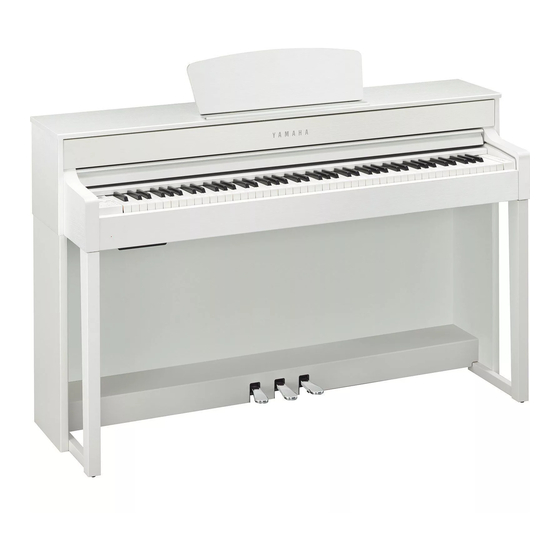Table of Contents
Advertisement
Owner's Manual
Mode d'emploi
IMPORTANT
— Check your power supply — (
Make sure that your local AC mains voltage matches the voltage specified on the name plate on the bottom panel. In some areas
a voltage selector may be provided on the bottom panel of the main keyboard unit near the power cord. Make sure that the voltage
selector is set for the voltage in your area. The voltage selector is set at 240V when the unit is initially shipped. To change the setting
use a "minus" screwdriver to rotate the selector dial so that the correct voltage appears next to the pointer on the panel.
Before using the instrument, be sure to read "PRECAUTIONS" on pages 6−7.
For information on assembling the instrument, refer to the instructions at the end of this manual.
IMPORTANT
— Vérifiez votre alimentation électrique — (
Vérifiez que la tension de votre alimentation secteur correspond à celle qui est spécifiée sur la plaque du fabricant, située sur le
panneau inférieur. Dans certaines régions, un sélecteur de tension peut être installé sur le panneau inférieur du clavier principal,
à proximité du cordon d'alimentation. Assurez-vous que le sélecteur de tension est réglé sur la tension utilisée dans votre région.
En usine, le sélecteur est initialement paramétré sur 240 V. Pour modifier ce réglage, utilisez un tournevis plat et faites tourner le
cadran du sélecteur jusqu'à ce que la valeur souhaitée apparaisse à côté de l'indicateur sur le panneau.
Avant d'utiliser l'instrument, lisez attentivement la section « PRÉCAUTIONS D'USAGE » aux pages 6 et 7.
Pour plus d'informations sur l'assemblage de l'instrument, reportez-vous aux instructions figurant à la fin de ce manuel.
CLP-585 /575 )
CLP-585 / 575 )
C L P - 5 8 5
C L P - 5 7 5
C L P - 5 4 5
C L P - 5 3 5
C L P - 5 6 5 GP
EN
FR
Advertisement
Table of Contents















Need help?
Do you have a question about the CLP- 585 and is the answer not in the manual?
Questions and answers